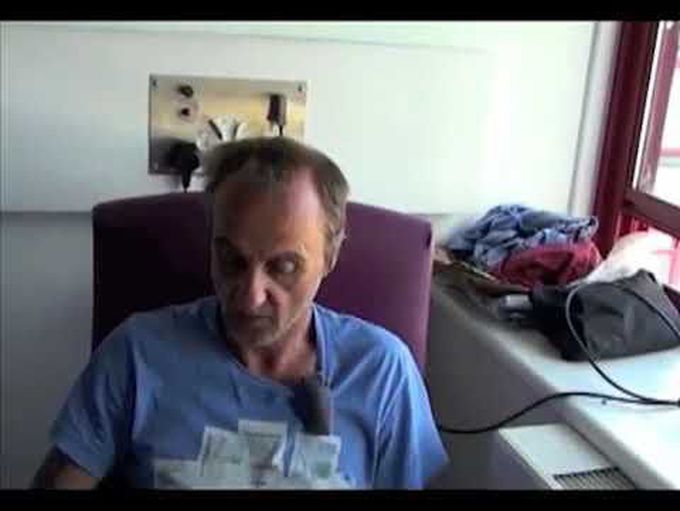


Signs and Symptoms of Tabes Dorsalis
*Tabes Dorsalis and Argyll Robertson Pupils* A 47-year-old man with a history of human immunodeficiency virus (HIV) infection presented with an 8-month history of severe paroxysmal shooting pains in his legs, progressive difficulty in walking, tinnitus, and urinary incontinence. He had a fully suppressed HIV viral load and a CD4+ count of 400 cells per cubic millimeter while receiving antiretroviral therapy. The physical examination showed Argyll Robertson pupils, which are nonreactive to bright light but briskly constrict when focusing on a near object (see video). Magnetic resonance imaging showed high signal changes in the dorsal columns of the thoracic spine, and samples of blood and cerebrospinal fluid were positive for syphilis on Venereal Disease Research Laboratory (VDRL) testing and Treponema pallidum particle agglutination assay. The patient was treated with intravenous penicillin for 14 days, and gabapentin was started for the neuropathic leg pains. Tabes dorsalis is a form of neurosyphilis that is characterized by degeneration of the nerves in the dorsal columns of the spinal cord. Along with Argyll Robertson pupils, the condition is associated with ataxia and loss of proprioception. After treatment, the patient’s symptoms and mobility slowly improved, although the shooting pains in his legs have continued despite pharmacotherapy. The serum VDRL level fell appropriately, and the result on VDRL testing of the cerebrospinal fluid was negative.
Living with HIV was one of the hardest experiences of my life. The fatigue, the emotional toll, and the uncertainty about the future weighed on me every single day. I had tried many treatments and medications, but nothing seemed to restore my health or energy the way I hoped.Out of both hope and desperation, I came across NaturePath Herbal Clinic. At first, I was skeptical but something about their natural approach and the powerful stories I read gave me the courage to try one more time.I began their herbal treatment program, and within a few weeks, I noticed small but meaningful changes more energy, better sleep, and a stronger immune system. Over the months, those improvements only grew. Today, I can truly say my life has changed. I feel healthier, more balanced, and finally in control of my well-being again.This isn’t just a testimony it’s a heartfelt recommendation to anyone living with HIV or any chronic condition. Don’t give up hope. I’m so grateful I gave NaturePath Herbal Clinic a chance. Visit their website to learn more: www.naturepathherbalclinic.com Email: info@naturepathherbalclinic.com


